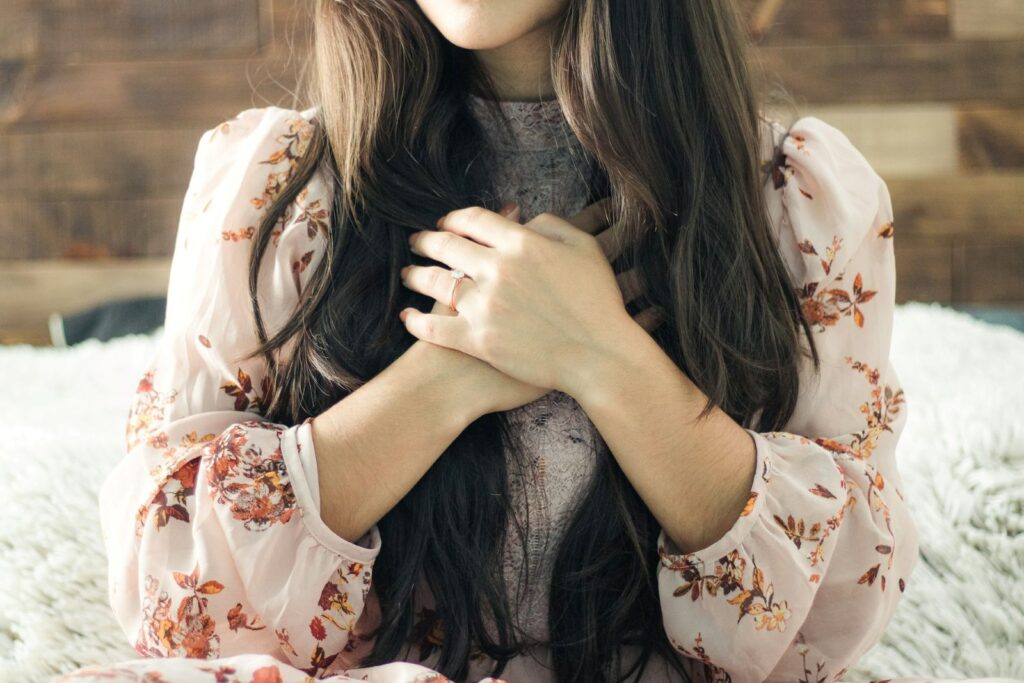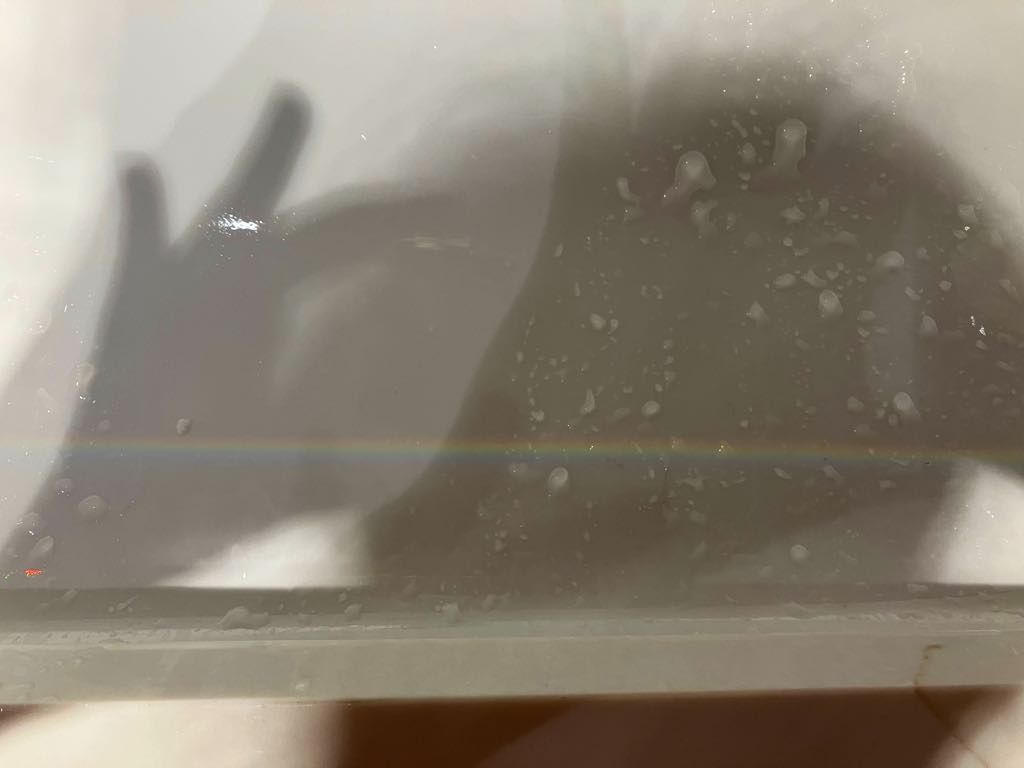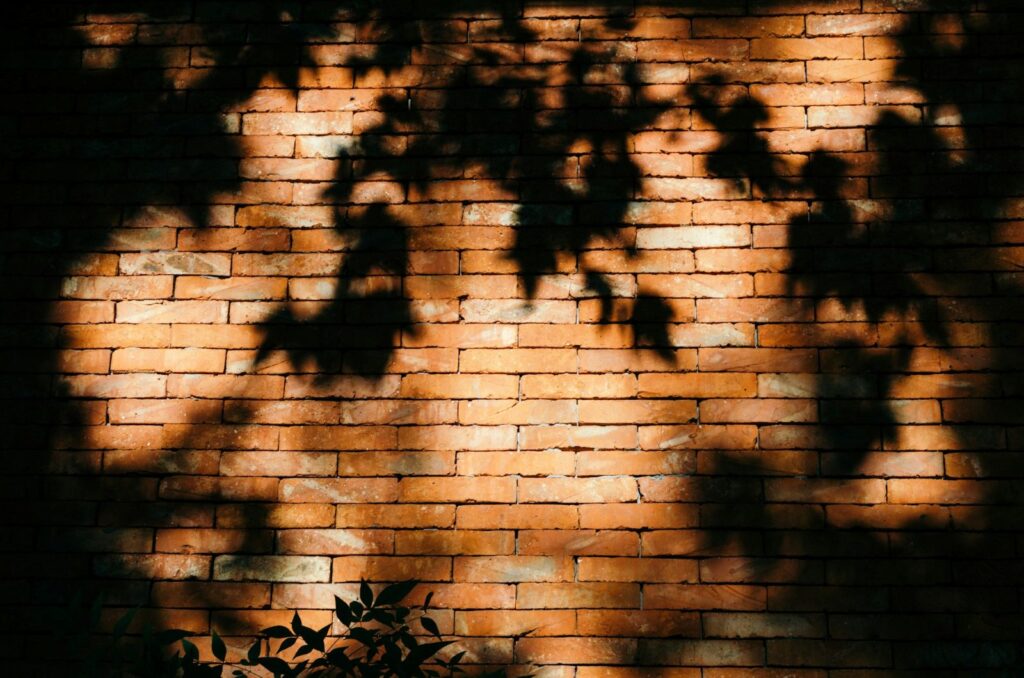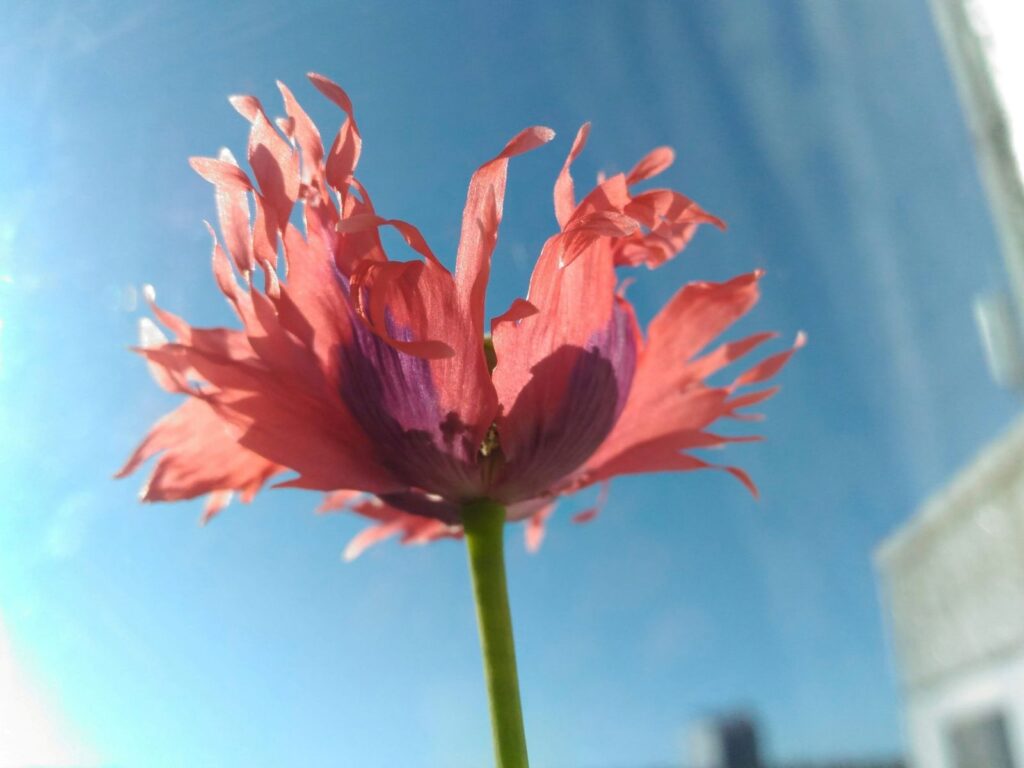I don’t have a good reason as to why I’m resharing this post from September 2017 – I didn’t rewatch Hamlet, for instance – but it’s what we call in the journalism world “an evergreen,” meaning it’s relevant at any time. Enjoy.
This weekend, I watched Hamlet with a friend of mine and remarked how the play touched me in a way it didn’t when I was a teenager. I’ve seen Hamlet on numerous occasions, I’ve heard the famous soliloquy a million times, and even unknowingly quoted from the play in this blog.
Hamlet is a story I’m familiar with, but watching it this weekend, I could relate to him; I understood him in a way I hadn’t before. No, my uncle did not kill my father and marry my mother, but I, too, have experienced anger, grief, and despair. As I watched Hamlet this weekend, all I could think was, “Me too.” I wouldn’t have taken the actions he took, but I empathize with his feelings in a way I didn’t before.
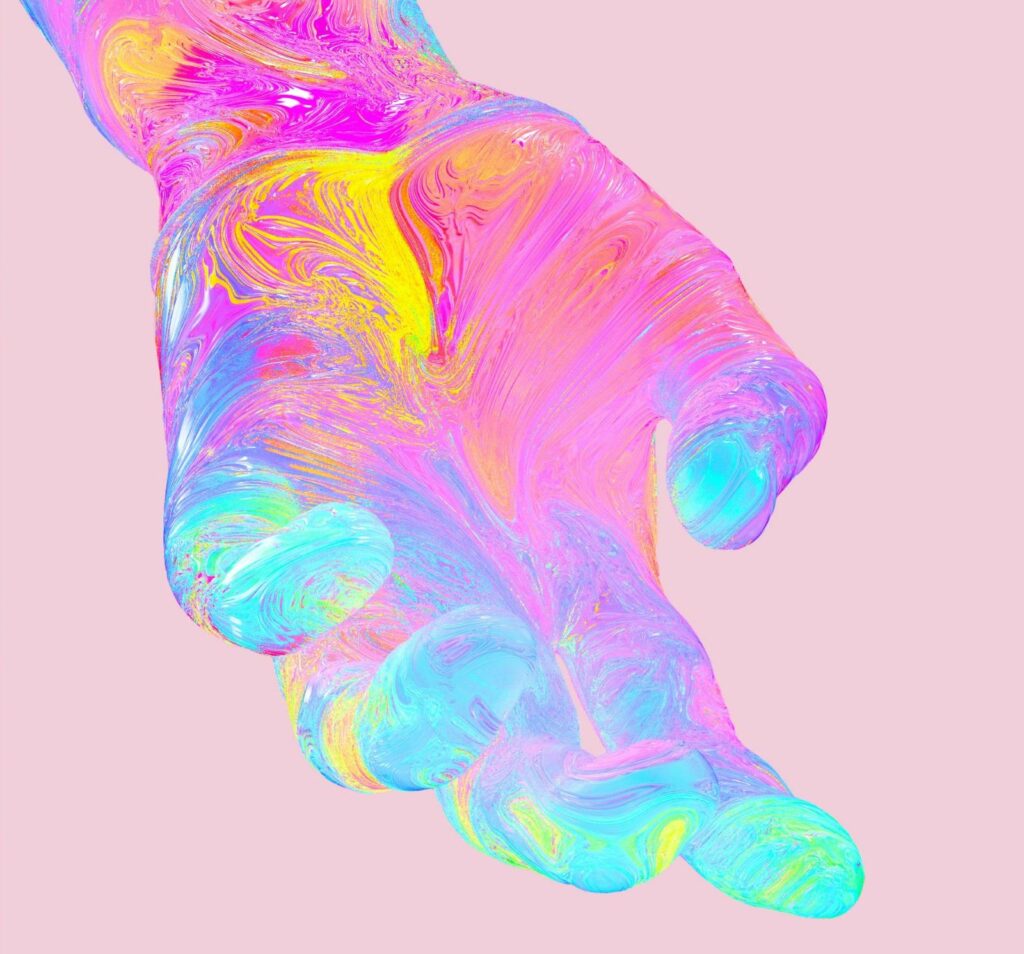
We all feel the same things. Photo by Maxim Berg on Unsplash
I’m reminded of that quote by Maya Angelou, who said, “We are all human; therefore, nothing human can be alien to us.” Yes! I’m not a scholar, but it seems to me Shakespeare’s work endures because he taps into the essence of what it means to be human, with all the pain, glory, comedy, and tragedy. One minute, Hamlet is contemplating suicide, and the next, his friends burst through the door, talking and laughing. That’s certainly how my life is. I think I mentioned it here, but literally the day after I found out my co-worker died, I unintentionally participated in a wedding held in my neighbor’s backyard. My windows were open, so the sounds of the ceremony wafted through the air. Life is tragic and comic, something Shakespeare understood and illustrated.
Even though he wrote his plays hundreds of years ago, they’re still relevant. There is no emotion anyone has ever felt that I haven’t felt too. Our experiences? Highly variable. Our emotions? The same. I bring this up because I wonder how things would be different if we all held this viewpoint. Instead of calling Mexicans rapists like a certain high-ranking official, instead of calling people aliens, what if we recognized that we are all human and thus nothing human can be alien to us?
My spiritual teacher said:
Human society comprises various races. There is no reason whatever to recognize one race as superior to another race. The external differences in constitutions among these human groups cannot alter their basic human traits – love and affection, pleasure and pain, hunger and thirst. These basic biological instincts and mental propensities equally predominate in human beings of all complexions in all countries and in all ages. A mere rustic, illiterate, half-naked tribal mother of an unknown hamlet … in India bears deep maternal affections for her young children; in the same way, a well-educated mother of a locality of New York pours out of her heart a great love for her own children.
The subterranean flow of love and affection exists in all hearts alike. Every person cries out in pain, everyone feels pleasure when there are occasions of joy and happiness. [F]undamentally, their mental existences flow along the same channels of ideas and consciousness. Containing the same cosmic momentum and under the same cosmic inspiration, they all have set out for a tryst with the same destiny.
That means we have more similarities than differences. We are all like one another. We are all human, and we’d do well to recognize that.
I dream of a world where we recognize we all have the same human emotions. A world where we remember there is nothing anyone can feel that we also haven’t felt, and vice versa. A world where we understand we aren’t so alien from each other, and in fact, humans aren’t aliens at all.
Another world is not only possible, it’s probable.
I was never a Girl Scout but you’d think I was because I’m always prepared. Not only do I have an earthquake kit, I also have a camping stove so I can still eat cooked food in that circumstance. If you need something, I probably have it. One time, I was in the car with someone who realized her food was undersalted, and I literally pulled out a mini salt shaker from my purse. Why am I like this? Because thinking ahead, preparing, and planning make me feel safer.
Sometimes this strategy works (i.e., preparing for an earthquake), but often it’s a waste of time because I imagine scenarios that never happen and conversations that never take place. Essentially, I try to predict the future so I can feel safe in the present. The thinking goes, “If I know what will happen, then I won’t be surprised, and if I’m not surprised, I’ll feel safe. I’ll be able to handle the situation.” But, well, I’m terrible at predicting the future. Even something as small as, “This is what I’ll be doing next week.” Over and over again, life throws me into unpredictable scenarios and situations.
A constant lesson lately – maybe it’s lifelong – is to stay present. Not only is joy found in the present, but safety, too. When I’m present, when I’m here, now, I can respond to what’s before me from a cool, level-headed place. It guards me against reactivity. When I’m present in the here and now, I’m accessing the wise self, the one who knows what to do. It’s tough because my default mode is to “future trip” or worry and obsess about the future.
Again, I do this because I want to feel safe. It’s not a character flaw – it’s a coping strategy. But what I’m learning is there are better ways to cope. Instead of imagining what I’ll say to so-and-so or contemplating whether XYZ will happen, I’m coming back to me. It’s better for me to say to my inner child – because let’s be real, it’s usually her who is freaking out – “I’m here. I’m not going anywhere. I’m not ever going anywhere. I can handle this. You don’t need to worry about it.”
Even typing that I exhaled deeply, which is a sure sign that I’m relaxed and regulated. Relaxed and regulated equals safe. When I don’t feel safe, my breathing is fast and shallow; I’m not grounded, and not in my body. And that brings me to my next point – what I’m learning is that safety is something that must be felt in the body by bringing in the body.
Gabor Maté says, “Safety is not the absence of threat; it is the presence of connection.” Sometimes that means being connected to others, but sometimes that means being connected to the self. I can’t control what other people are doing, but I can control what I’m doing. I can connect with myself not by spinning out about future scenarios but by being here, now. I can connect with myself by putting my hand on my heart and talking to myself like I would a friend. I can connect with myself by letting my exhales be longer than my inhales.
I care a lot about safety and what I’m learning is that it only exists in the present. And furthermore, it only exists if I’m connected – to myself, to others, and to the Divine Beloved. May you also experience that connection, if you so wish.
I dream of a world where we understand we can’t always think our way into safety. A world where we understand we can prepare for some things but not others. A world where we recognize safety happens in the present. A world where we let ourselves feel safe by connecting.
Another world is not only possible, it’s probable.
I watched a clip of Netflix’s “Famous Last Words: Jane Goodall” and started tearing up. That woman was an icon, a messenger of hope, and someone who remained consistent until her dying breath. She exemplified neohumanism, a concept in my spiritual tradition, that begs the question, “What is the boundary of your identity?”
Neohumanism encourages bridge building not only with other people, but also with plants and animals. For Jane, she saw animals not as heartless brutes, but as beings that have rich inner lives just as humans do. They cry, experience joy, and have other emotions. From a Mongabay news piece I read, “She blurred the categorical wall that placed humans above other animals. Her work became foundational not only for primatology, but for animal welfare and environmental ethics.”
But she wasn’t an animal rights activist who said, “Screw all the humans! You’re terrible!” Instead, she tried to connect with people she didn’t see eye-to-eye with. She said, “If you don’t talk to people you disagree with, how can you expect them to change?” She understood that being a purist or isolating yourself from others only creates more isolation, and what this planet actually needs is people working together.
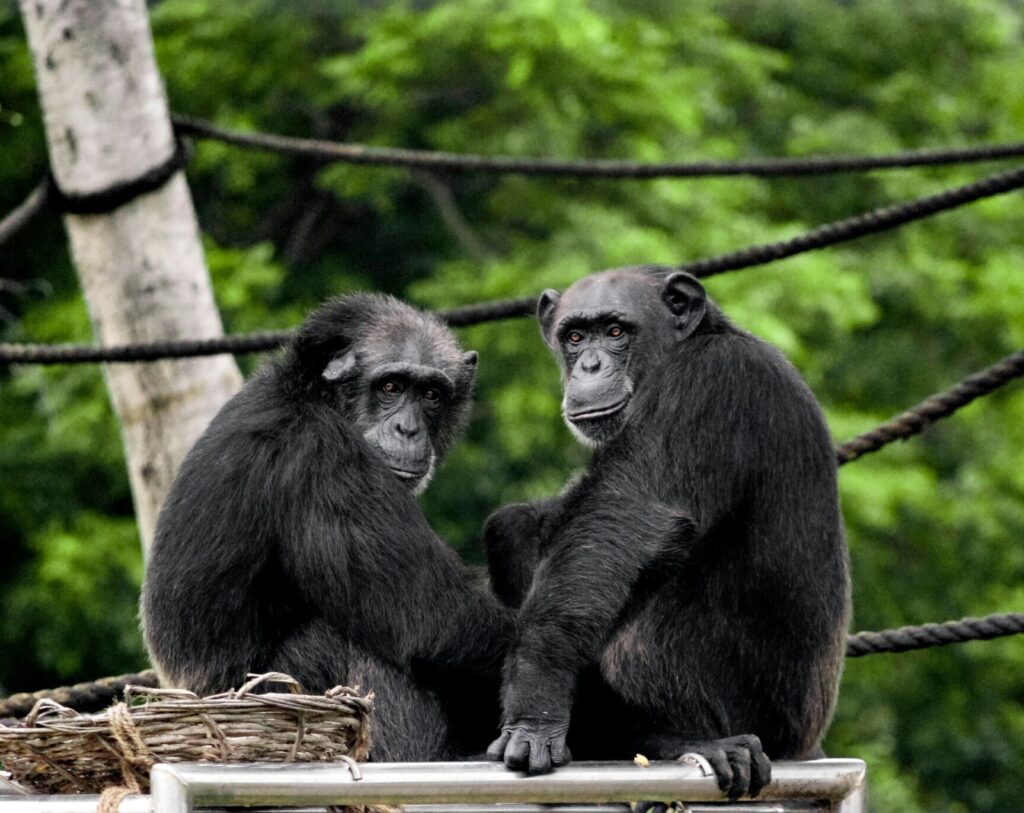
In honor of Jane, of course. Photo by Satya deep on Unsplash
Jane also followed up her words with actions by creating Roots & Shoots, a youth action program that empowers young people to be the change in their communities. It spans more than 140 countries and has projects ranging from recycling drives and community gardens to tree-planting campaigns and animal rescues. Underpinning the youth movement, and Jane’s ethos in general, is that every action matters.
“You cannot get through a single day without having an impact on the world around you,” Jane often reminded her audiences. “What you do makes a difference, and you have to decide what kind of difference you want to make.”
I keep thinking about that quote, and like I wrote about last week, that each of us has influence even if we’re not an influencer. If we accept it as fact that we impact the world every single day, what kind of impact do we want to have? Some people are hellbent on impacting the world negatively by cutting healthcare access, deporting immigrants, or laying off workers so they can further line their own pockets.
In response to those people hellbent on negatively impacting the world, it feels like everyone and their mother is asking, “How are you working to stop them?” I have idiopathic hypersomnia and panic in crowds, so I’m not capable of being in the streets. I can’t join the protests, the marches, the trainings. And I have a loooot of feelings about that. But that doesn’t mean I’m not impacting the world around me. It doesn’t mean I’m not making a contribution.
I’m not a perfect person. I make mistakes. Sometimes I’m the villain in someone else’s story. But more often than not, the contribution I make is one of kindness, empathy, and authenticity. I may not speak in front of millions, but I’ll chat with a friend for an hour so she feels seen and heard. I may not join a protest, but I’ll show up for my friend’s film premiere. Even though those actions are small, they, too, make a difference. And they’re the sort of difference I want to make.
I dream of a world where we all embody the virtues Jane Goodall emphasized as much as we can. A world where we continue to have hope, show compassion, and see every being as worthy of love and respect. A world where we understand every day we make a difference, and we consciously choose what kind of difference we want to make.
Another world is not only possible, it’s probable.
I’m not really sure what to share this week. I’m still in the chrysalis, but/and I can’t force transformation. I can’t be somewhere I’m not and no amount of urging or desire will bring me there. These things unfold in their own time, as much as I wish they followed my timeline instead. What I’m noticing, though, is I’m grateful for co-travelers and so this blog from October 2017 feels appropriate.
What a week. Lots of grief on a societal level, but also a personal one. I’m reminded of how human we are. Of how we’re all in this together. As Ram Dass says, “We’re all just walking each other home.”
In times of trauma and grief, I want to do something. Sometimes there are actions to take, but sometimes all we can do is hold each other while we cry.
With painful feelings, I’ve often wanted someone else to take them away. To siphon them off like sucking water through a straw. I wanted someone, anyone, to make me feel better. Speaking as someone with loads of experience trying to escape her feelings, I can say without a doubt the answer is, “That’s not possible.” No one else can cry my tears for me. No one else can take away my pain. Other people and things may distract me for a while, but just as with storm clouds, they darken the sky whether I acknowledge them or not.
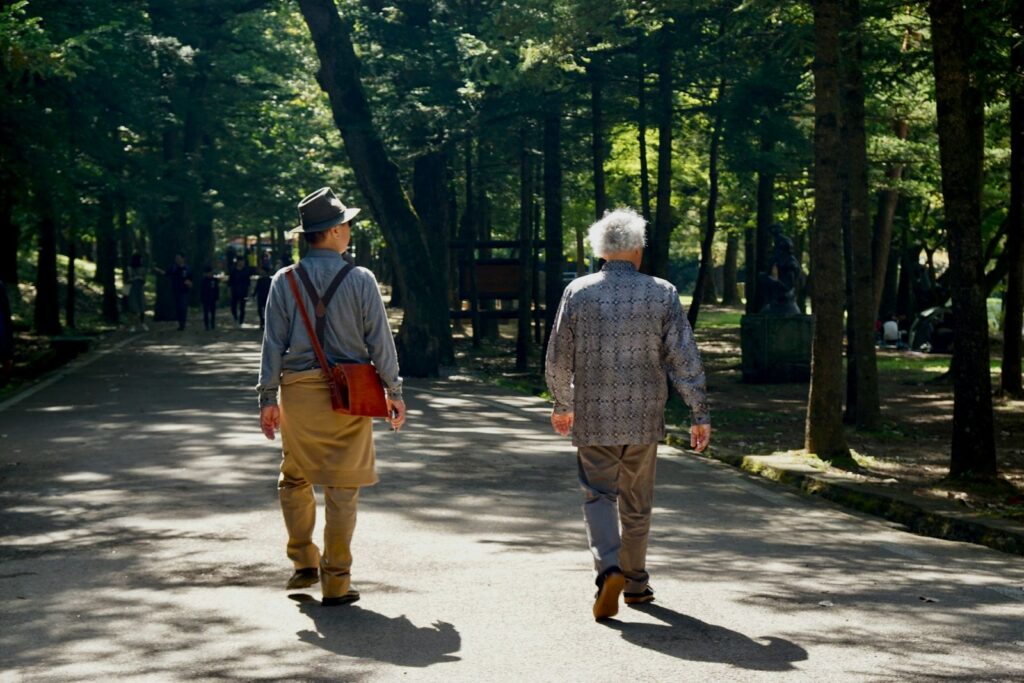
I hope you always have a walking companion. Photo by Beth Macdonald on Unsplash
Ram Dass’ quote reminds me that no one is supposed to take away my pain and sorrow because we are all humans. We are not machines. We can’t write a code that says, “We will never feel sad ever again.” Furthermore, it’s no one’s responsibility to make me feel better. We are fellow companions on this path. We are pilgrims going on a pilgrimage. There may be times I sprain my ankle and have to rely on others for help, but the responsibility for forward motion is still mine, and the responsibility to move through my emotions is still mine.
My spiritual teacher says, “[A] true society is like a group of pilgrims who attain a deep psychic affinity while traveling together, which helps them solve all the problems in their individual and social lives.”
That’s us. A group of pilgrims traveling this rocky path together. I’m speaking in metaphors a lot in this post, but what I’m trying to get at is it’s not my responsibility to solve or fix someone’s emotional state, or vice versa. I don’t have all the answers, or any of the answers, really. I can’t tell a person how to live their life or what they should do to feel better. All I can do is say, “I hear you and I’m beside you. I’m walking this path with you as a companion.” And that’s it. We’ll address problems as they arise – blisters, sprained ankles, etc. – but the emotional states? I’ll be with you during them, but the tears are still yours to cry and the steps are still yours to walk. And maybe that’s enough.
I dream of a world where we recognize we are all pilgrims on a pilgrimage. A world where we sit with each other when we’re in pain. A world where we realize all we can do is be there for each other. A world where we remember we’re all just walking together.
Another world is not only possible, it’s probable.
It’s been truly strange around my neighborhood for the last few days, and I’m not reacting the way I thought I’d react – or the way other people are predicting I’d react. On Thursday, my friend Michael was standing in the doorway and said, “Do you know that guy?” A young man was hopping the fence that separates my apartment complex from my neighbors. I didn’t know him. Michael confronted him as he hopped the fence on the other side.
A few minutes later, police officers drove down the street, and Michael notified them about the trespasser. I thought that would be the end of it, but it wasn’t. The police officers kept coming. And so did two helicopters. And then U.S. marshals. Around 40 police officers and U.S. marshals blocked my street and patrolled with assault rifles drawn. I went grocery shopping in the middle of this and they wouldn’t let me walk back to my apartment without a police escort. Some of my neighbors weren’t allowed in their homes while the officers looked for the guy who hopped the fence.
I read in a news article later that the guy who jumped my fence was armed and the U.S. marshals were looking for him along with two others who were involved in a robbery. One of the culprits violated his patrol. This search and lockdown continued for hours. The two helicopters circled right above me for three hours straight. Police officers literally blocked my driveway.
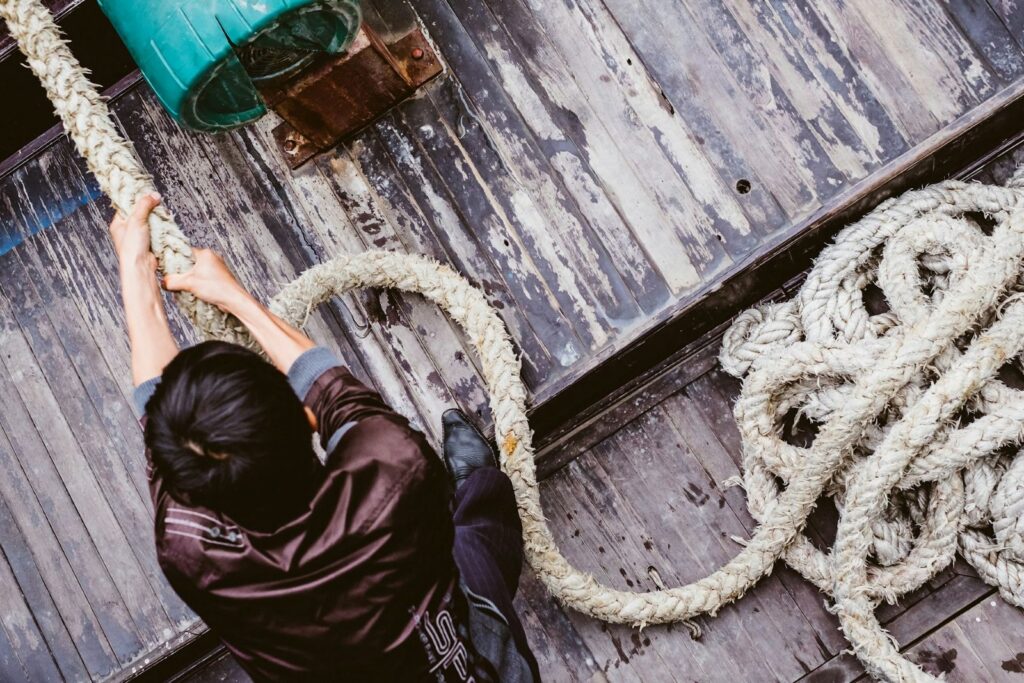
You can do it! Photo by Stijn Swinnen on Unsplash
When I tell most people the events from Thursday, they respond with, “Wow. That’s so scary.” But here’s the thing: I didn’t feel scared. Even though I saw the person they were after. Even though there were guns drawn. I was annoyed. My nerves were frayed from the constant noise and stimulation. But I wasn’t scared.
Then on Saturday, I was without power for 11 hours. I knew it was coming – the electricity company needed to work on a utility pole. Friends remarked how annoying that would be, how unsettling. But I didn’t really mind. It was quiet. I couldn’t even hear the hum of a refrigerator. And it wasn’t so bad because I have a gas stove and could still make myself food. Plus, I just returned from traveling so my tablet was filled with downloaded movies and TV shows. It was fine. I was fine.
My reactions remind me of a quote by A.A. Milne, author of the Winnie-the-Pooh series, who said, “You are braver than you believe, stronger than you seem, smarter than you think, and loved more than you know.” I am strong, and brave, and resilient. I don’t operate with the same amount of fear anymore – even in situations where people expect me to be afraid, I’m not.
Essentially, I’m stepping into my power. I’m owning what I’m capable of as I am, right now. Not the me of 10 years ago. Not the me people think I should be, but the me of here, and now. The me who meets challenges over and over again. The me that says, “I’m scared but I’m still facing this.” I know that’s not true for everyone but even still, maybe you are braver than you believe, stronger than you seem, smarter than you think, and loved more than you know.
I dream of a world where we see ourselves clearly. A world where we stop selling ourselves short. A world where we understand we are capable of so much more than we give ourselves credit for. A world where we take care of ourselves over and over again and realize that’s exactly what we’re doing.
Another world is not only possible, it’s probable.
I’m currently traveling and never have I identified more with the Charles Dickens line, “It was the best of times, it was the worst of times.” The lows are low (no clean clothes for 48 hours! Diverted plane! An unexpected six-hour bus ride!) but the highs are also high. I’m meeting my friends’ children for the first time. I’m reuniting with people I haven’t seen in two years, 10 years. And I’m trying to do as Joseph Campbell advises when he says, “We cannot cure the world of sorrows, but we can choose to live in joy.”
I know there are terrible things happening. I know the world can be so horrible it will break your heart over and over again. I know people are struggling (myself included) but I am choosing to live in joy. And more than that, I’m choosing to relish the little joys when they arrive. Here’s a little story about that.
In early July, I was at a yoga and meditation retreat in upstate New York. It was so sweet to see my spiritual family and connect with people I hadn’t seen in ages. But it was also hard physically – no air-conditioning in the dorms, people walking on creaky wooden floors at all hours of the day and night, and just generally sleeping poorly in a new place. My body was wrecked.
After the retreat, I met my fourth cousin for the first time, who graciously let me stay in his two-bedroom, two-bath apartment near Times Square. Air-conditioning! A comfy bed! No creaky floors! A pool! It was exactly what I needed. The joy of temperature control after sweating all night cannot be overstated. But even still, I was tired, cranky, and feeling off because for the first time in a week, I was completely alone. As I brushed my teeth in my cousin’s bathroom, I looked down and saw a rainbow stripe in the sink.
Many people know that I have a thing about hearts and the word “love.” I see either or both every single day. I share many of those images on Instagram. What’s less known is I also have a thing about rainbows. Whenever I see a rainbow, I will squeal in delight or, at the very least, smile. Rainbows bring me joy in a way that hearts do not because they’re unexpected and rare. It’s easy to spot a heart every day if you look for one because people wear heart necklaces. They carve them into cement. They decorate their homes with love paraphernalia. Hearts are everywhere. Rainbows are not.
When I see a rainbow, it’s like the universe is saying to me, “Hey! Remember the good stuff, kiddo! Relish the joy and remember it can come out of the blue!” When so much of the world feels like a dumpster fire, it feels important to remember that. It relates to a concept my spiritual teacher touts, which is, “Here in the universe, nothing is stationary, nothing is fixed. Everything moves; that’s why this universe is called jagat. Movement is its dharma; movement is its innate characteristic.”
Movement is the innate characteristic of the universe. Nothing is stagnant or static or stale. The world will always be full of sorrows but it will also be full of joys. Am I relishing them when they come? It’s definitely a practice but I’m doing my best because joy is a lot more, well, enjoyable.
I dream of a world where we understand there are always bad things happening but there are also always good things happening. A world where we understand joy is often about the little things – air-conditioning on a hot summer’s day, going to the pool with friends, seeing a rainbow in an unexpected place. A world where we do our best to relish those little joys because we know they aren’t so little after all.
Another world is not only possible, it’s probable.
Many years ago, I had a conversation with one of my closest friends about enlightenment. We compared our approaches – how I live in idealism, fantasy, and move toward the light. He told me his approach is more like crawling down the back of a scaly beast until he comes full circle at its snout. I heard what he said but I didn’t understand it because who wants to go down the scaly back of a beast? Who wants to peer into the seedy underbelly?
It turns out that I do. I’m currently experiencing the astrological transits associated with the mid-life crisis (and if you were born in 1984 or 1985, you are too). If you’re interested, that’s Pluto square Pluto, and essentially it means looking at the shadow and everything that remained hidden. It’s doing what Carl Jung suggested when he said, “One does not become enlightened by imagining figures of light, but by making the darkness conscious.”
I’m realizing how true that is. In my post from the other week about meeting the self, I talked about the importance of looking in the mirror, and sometimes, when you look in the mirror, you don’t like what you see. Some people become well-practiced at avoiding the mirror. It’s too scary, it’s too threatening to witness the parts they want to hide but that’s not me. I’m devoted to myself and that means all parts of myself.
As if to underscore this point, I pulled an oracle card called “Diving for Light.” The author Alana Fairchild says, “It can be so much simpler to seek light in the heavenly, in that which is blissful, sweet, loving, and kind. To look for the light in that which is dark is an advanced task that only a rebellious and brave heart will attempt. You may not feel that you have taken such a journey by choice. Yet you have taken this wise challenge from deep within your soul. Your innermost being has evoked this situation in your life with the intention that you grow in power, wisdom, and creative juice. It also wants you to experience a bold and fearless trust in life and become further empowered to live it with zest and courage.”
That’s true. I want to live fully. I want to liberate myself through expansion, and that means every situation, every struggle, every everything is an opportunity to move closer to the Divine Beloved or further away. My spiritual teacher says our path is an all-around fight, both internally and externally. That means facing my fears, protesting injustice, and always asking, “How can I use this situation or experience to grow?” It’s not only the happy, joyful situations. It’s also the ones that have me crying every single day.
I’m diving for the light by mining the darkness. I’m sifting through the muck looking for gold, not because I particularly want to, but because I recognize there’s something of value in doing so. On the other end of this is more power, more wisdom, more creativity, and being one step closer to enlightenment.
I dream of a world where we understand to become enlightened, we must make the darkness conscious. A world where we use everything as an opportunity to move closer to the Divine Beloved. A world where we dive for the light because we understand that something powerful and transformative is waiting for us in the shadows.
Another world is not only possible, it’s probable.
As we’re approaching the July 4th holiday, a time that supposedly celebrates freedom and independence, I’m reminded of this post from five years ago. Enjoy.
What does it mean to be free? Some people would say it’s doing whatever you want, whenever you want. But is that really true? In Rebecca Solnit’s excellent essay on “Masculinity as Radical Selfishness,” she mentions the axiom, “My right to swing my arm ends where your nose begins,” which is about balancing personal freedom with the rights of others. It’s also about watching out for someone else’s rights. However, what we’re seeing is the idea that my right to swing my arm doesn’t end where your nose begins, but instead just doesn’t end. And in fact, your nose is not my problem, and it should get out of the way.
She also says in the U.S., “unlimited armswinging peaks at an intersection between whiteness and maleness, with plenty of white women on board who seem to believe that a white lady’s job is to protect white men’s armswinging (often with a selfless disregard for their own noses).” What we’re seeing is peak entitlement and conflating “freedom” with hypermasculinity as well as white supremacy. Who is it that thinks they should have unlimited armswinging? White men (but not all white men, to be clear).
This is incredibly juvenile and shortsighted because no person is an island (even if they have enough money to buy one). We don’t live in our own self-contained bubbles, able to accomplish everything by ourselves. We want someone else to cut our hair. We want someone else to make our food. Humans are social creatures. We are not meant to live in isolation.
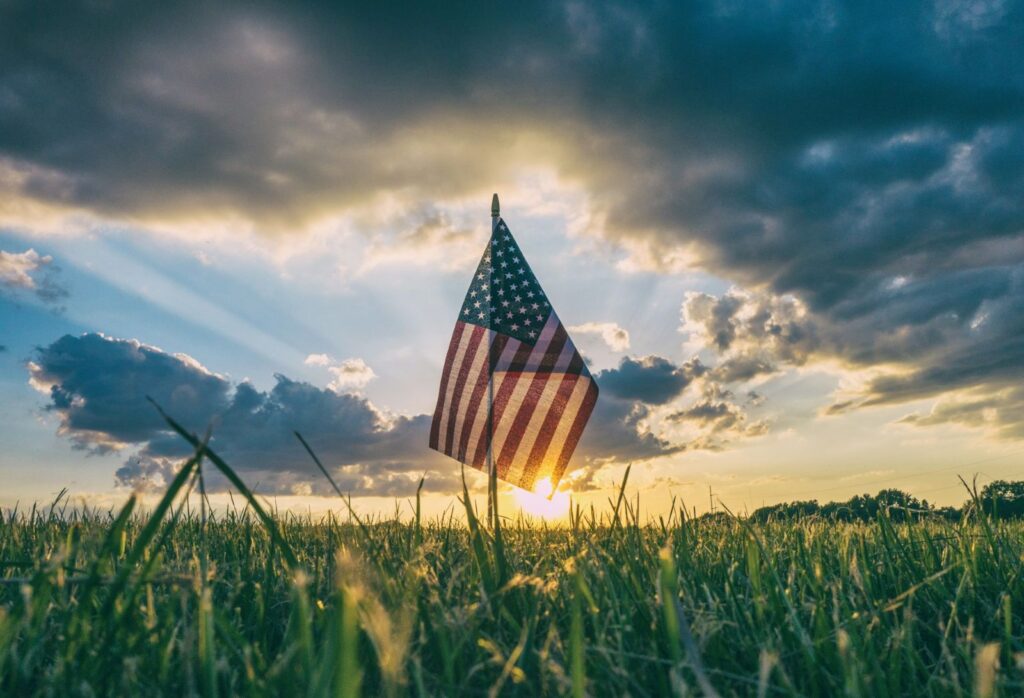
Real freedom requires limits. Photo by Aaron Burden on Unsplash
The hypermasculine freedom some in the U.S. idealize is a myth because what happens when that individual gets sick? They rely on the collective to help them out – they go to the hospital for care, or a doctor, or the drugstore.
My spiritual teacher says, “Just as my life is important to me, others’ lives are equally important to them; and if we do not give proper value to the lives of all creatures, then the development of the entire humanity becomes impossible.”
It becomes impossible because individual life is bound to the collective. Collective welfare lies in individuals, and individual welfare lies in collectivity. There is no instance where my individual welfare doesn’t contribute to collective welfare. And furthermore, real freedom requires constraint. That may seem like an oxymoron but hear me out.
Retired Navy SEAL, author, and podcaster Jocko Willink says, “Freedom is what everyone wants – to be able to act and live with freedom. But the only way to get to a place of freedom is through discipline. If you want financial freedom, you have to have financial discipline. If you want more free time, you have to follow a more disciplined time management system. Discipline equals freedom applies to every aspect of life: If you want more freedom, get more discipline.”
He’s talking specifically about individual freedom, of course, but I think the same message applies to collective freedom. We’re able to drive safely, for the most part, because there are rules associated with driving. We’re able to buy food we enjoy because there are regulations that keep expired food off the shelves. I realize there are problems with the rules and regulations I listed, but I’d much rather have those problems than going into a grocery store and wondering if the food I’m buying will poison me.
Real freedom requires discipline and a care for others. Anything else is just selfishness that will eventually catch up to us.
I dream of a world where we recognize true freedom requires giving up a little bit of freedom. A world where we understand we can’t do what we want whenever we please without consequences for ourselves and others. A world where we understand there’s an inherent relationship between freedom and limitation.
Another world is not only possible, it’s probable.
I’m editing a fascinating book about judgment. I can’t quote from it because, hi, it’s unpublished and also not my writing, but I can talk about the general ideas and also quote from others.
My client makes the case that when we judge other people, it’s often because we aren’t tending to the vulnerable parts of ourselves. The parts that need to be met with love and care. For instance, if I say, “He’s so lazy,” it’s likely there’s a part of me that’s sad because I long to rest. But instead of holding that grief – that I desire to rest and feel unable to do so – I’m projecting and calling that man lazy. And judgment of any kind, toward others or the self, breaks connection with our own heart, to paraphrase Tara Brach.
Why does that matter? The older I get and the deeper I go into spirituality, the more I understand that enlightenment is not only living in the light. It’s going into the shadows. It’s descending into the metaphorical underworld to rescue the parts of ourselves that we’ve exiled. The ones who are scared. The ones who are ashamed. The ones who feel unlovable. Writer and spiritual teacher Jeff Foster Brown says: “Real spirituality is all about ‘enrealment’ – it includes everything human in the equation. The real now is the one that includes everything we left behind on the path. We must work through our story before the unresolved elements of our story kill us.”
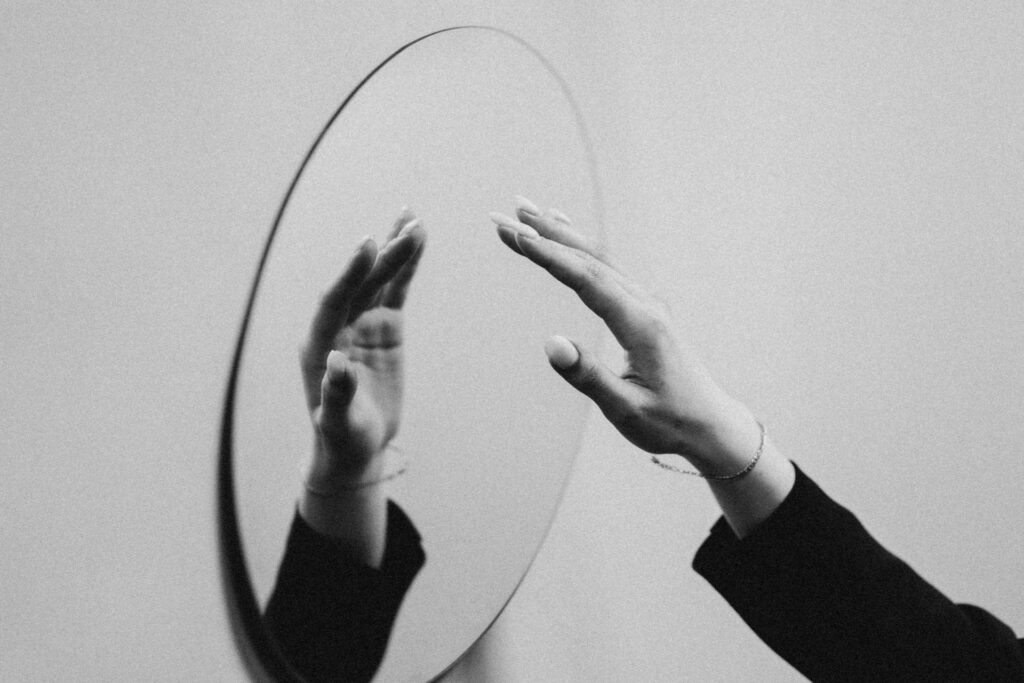
Meeting the Self is one the hardest and most healing things we can do. Photo by Михаил Секацкий on Unsplash
The unresolved elements of our story remain unresolved until we face them. It’s the low hum of anxiety in the background, even though on paper everything looks fine. It’s the vaguely dissatisfying nature of our relationships. It’s the knowledge that we could be doing so much more but we’re not. You could live your whole life like that, and many people do. But regardless, these feelings are symptoms; they are an invitation to meet your Self.
Psychotherapist Matt Licata wrote:
“The invitation is into intimate communion: to move closer, and even closer still, into the feelings, the emotions, and the sensations as they surge. To surround the surging material with curiosity, warmth, and most importantly with kindness, as an inner explorer of the galaxy of your own body, of which there is no temple more sacred.”
So many people try to escape themselves – into the arms of another person, via the bottom of a bottle, through the excitement of a video game – but it doesn’t work long term. Speaking as an addict in recovery, I know from experience. I have the receipts. But my whole life got so much better – richer, fuller, more joyful – when I stopped running and met my Self. You might be saying, “That’s so vague. What does it even mean?”
I can’t condense nearly two decades of personal development into a single blogpost but if you’re interested in meeting your Self, and I recognize you may not be, a good place to start is with a timer.
When I was early in recovery, feeling my feelings was like being flayed alive. It was excruciating. Deeply painful. Scary. Feeling my feelings was the last thing I wanted to do! What if they never ended? What if I was sad/scared/angry forever?!? What helped was setting a timer. For five minutes, I let myself feel whatever I was feeling and after the five minutes (that usually turned into 10), I would stop. The feelings had a beginning and an end. When the timer rang, I could go on with my day. That was the beginning of meeting myself.
As my client emphasizes, healing happens with presence – not trying to fix, change, or solve anything. Just presence. Just being with. And we don’t need to wait for someone else to do that, we can give presence to ourselves. And the more we are present with ourselves, the more we are present with others. The more we meet ourselves, the more we can meet our true selves as divine beings of light. And that’s something I wish for everyone.
I dream of a world where we understand judgment is a protection mechanism. A way of not tending to the ones inside. A world where we see these judgments as invitations to turn inward. A world where we commune with the entirety of who we are because we understand enlightenment is about enrealment. A world where we are brave enough to meet ourselves.
Another world is not only possible, it’s probable.
I’ve had an interesting experience over the past month or so. People whom I thought I’d never see or talk to again have been resurfacing. Not one or two people, either – five. Folks that I haven’t seen, talked to, or thought of in one year, two years, three years, five years have been popping up in unexpected ways and places.
So often I get stuck in binary thinking: “This person is in my life forever,” or “They’re gone for good,” but life is reminding me I don’t actually know. I don’t know who will cycle in and out of life. I think I know. I want to know, but there’s evidence staring me in the face of how wrong I am. To be clear, resurfacing doesn’t always mean reconnecting. Sometimes people show up again only for you to say, “Ew. No. Hard pass.” But still. It’s interesting when people reenter your life.
The whole thing is reminding me of humility. I don’t mean humiliation or low self-esteem. The word “humility” originates from the Church Latin word humilis, which literally translates as “on the ground.” Other words that mean “Earth” are also part of the etymology of “humility.” Being humble means keeping your feet on the ground and staying present here on Earth.
In my post from two weeks ago about grounding in reality, I talked about discernment and using the mind to vet information. But what I’m also recognizing is that grounding in reality means accepting we just don’t know. We don’t know the future. We don’t know if a project is finished even if we think it is. We don’t know who we’ll be connected to a year from now, two years from now. We don’t really know anything.
As a journalist, as someone who loves investigating the truth in herself and others, this is incredibly humbling. Over and over again, life says to me, “You think you know what’s coming? Baby, you don’t have a freaking clue.” That can feel scary. Or at least it does for me. But this, too, is reality. And instead of spending countless hours trying to predict what will happen next, it’s better for me to be here, now.
Do I sound like a broken record? I kind of am right now because I’m trying to anchor in truth and reality. I’m trying to live the principles Eckhart Tolle talks about in The Power of Now. He says, “Most people treat the present moment as if it were an obstacle that they need to overcome. Since the present moment is life itself, it is an insane way to live.” The present moment is life itself. Life is what’s here, now, here now. Even the hard parts. Even the things I want to skip over.
Life is always a mixed bag – it will never be all good or all bad. This is why every happiness expert talks about gratitude and focusing on the positive. There will always be something negative. Always. That doesn’t go away. But what’s positive about the present moment? And can I stay humble, recognizing I don’t know what’s next? Can I remember it’s better for me to not even try to know? That’s what I’m working on, anyway. And life keeps sending me reminders when I forget.
I dream of a world where we stay humble. A world where we understand we don’t actually know if something is finished or whether a person will resurface in our lives. A world where we stop trying to predict the future and instead live here, now. Because the present isn’t an obstacle we need to overcome. The present is where life happens.
Another world is not only possible, it’s probable.
